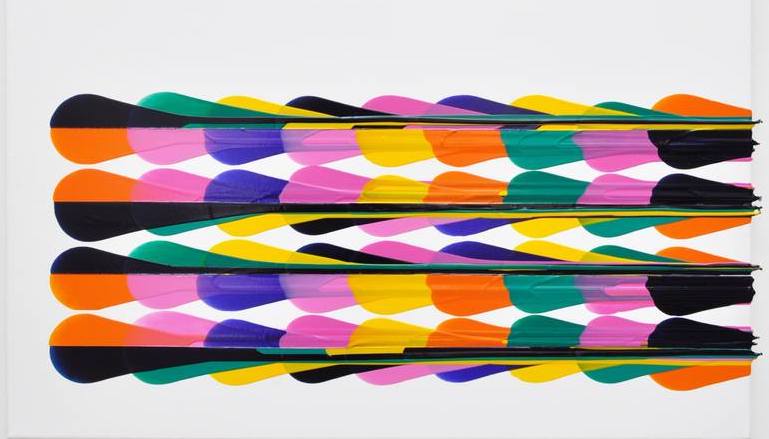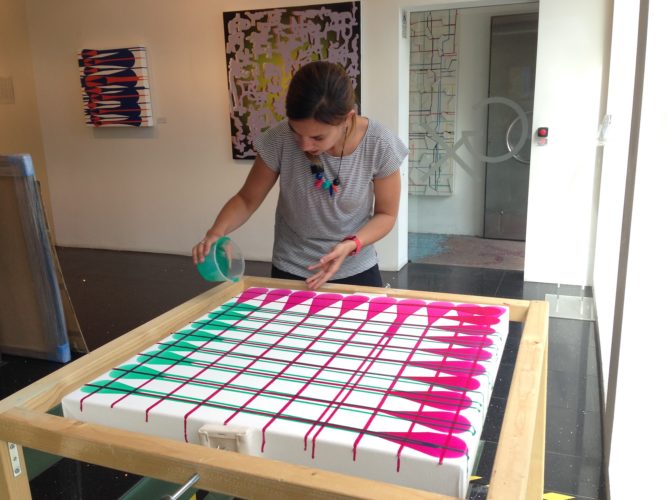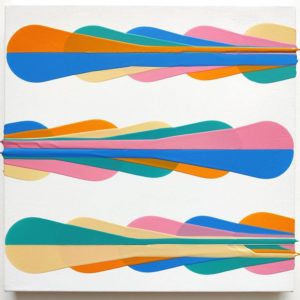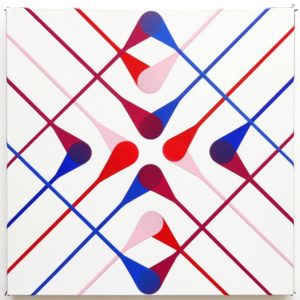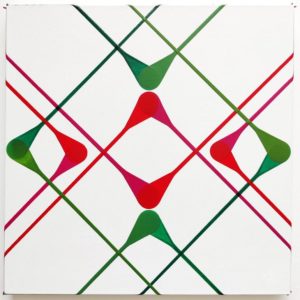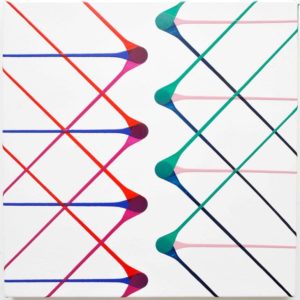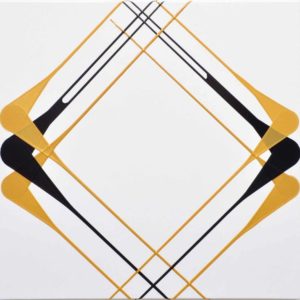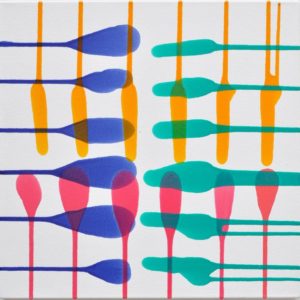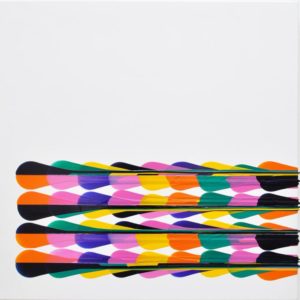The Others
 Meet the Others: Sarah Emily Porter
Meet the Others: Sarah Emily Porter
The Game Changers. The Rule Breakers. The Innovators. Discover some of the fantastic emerging talent showcasing their work at The Other Art Fair.
Sarah Emily Porter‘s practice is unique in that she unconventionally pours her paints and tilts the canvas on a specially created wooden structure. By studying and understanding the chemical properties of paint, Sarah’s paintings create a dialogue between art, science and mathematics, highlighting the complexity of colour and the traditions, history and language of painting. All that in just one artwork! Read on to find out more about Sarah and her practice.
Tell us about who you are and what you do. What is your background?
I’m Sarah, a full-time artist working from my studio in East London. I studied architectural history in Durham and subsequently worked in Event Management for various charities and the Government before completing my post-graduate diploma in Fine Art at Chelsea College of Art in 2016. As well as painting, I run a design studio, Porter + Trundle which makes playful, large-scale sculptural works.
If you could describe your work in 3 words, what would they be?
Minimal, Colourful and Tactile
Can you walk us through your process? How do you know when an artwork finished?
My practice focuses on making through the development of experimental machinery and production methods to manipulate the core ingredients and structures associated with the traditions of painting. I map carefully considered systems and orders to form a framework for the production of my paintings so everything is planned and ordered before the paint hits the canvas.
The paint is poured from pots, ebbing and flowing in a single linear stroke under the force of gravity as the canvases tilt on makeshift mechanisms. As the work is repeatedly moved from horizontal to vertical positions it becomes a collaboration between my own desires and the unpredictable tendencies of my materials.
Unlike a traditional painter who eternally struggles to decide when the work is complete, my work is finalised once my preconceived (often mathematical) systems have been materialised. I tend to think of painting as an event – one that is as much concerned with the process of its emergence as it is with the final outcome. Material, machine and artist each take their turn in leading or resisting the outcome and it is a sensitivity to this push and pull that drives the work.
Has being in isolation affected your artwork practice in any way?
It took me a while to settle into “the new normal” and without access to my studio I really didn’t feel very creative so my work took a bit of a backseat. It was hard seeing other people’s production increase whilst mine fell, but looking back I loved having a bit of headspace away from the studio to plan my next moves and focus on what’s important in my practice. I definitely feel better prepared now to face any uncertainty and I’m very excited about 2021 – whatever it may bring!
What is the best advice given to you as an artist?
Keep experimenting and keep being curious to stop your work stagnating.
Can you tell us something about you that people would be surprised to hear?
I used to play the steel drums.
Shop artwork by Sarah and other trailblazing artists at The Other Art Fair’s Online Studios.
Introducing The Other Art Fair Online Studios, a new online platform offering art lovers around the world access to over 800 Fair artists. The Online Studios will keep our community feeling inspired, engaged, and continue to spread joy through art.
